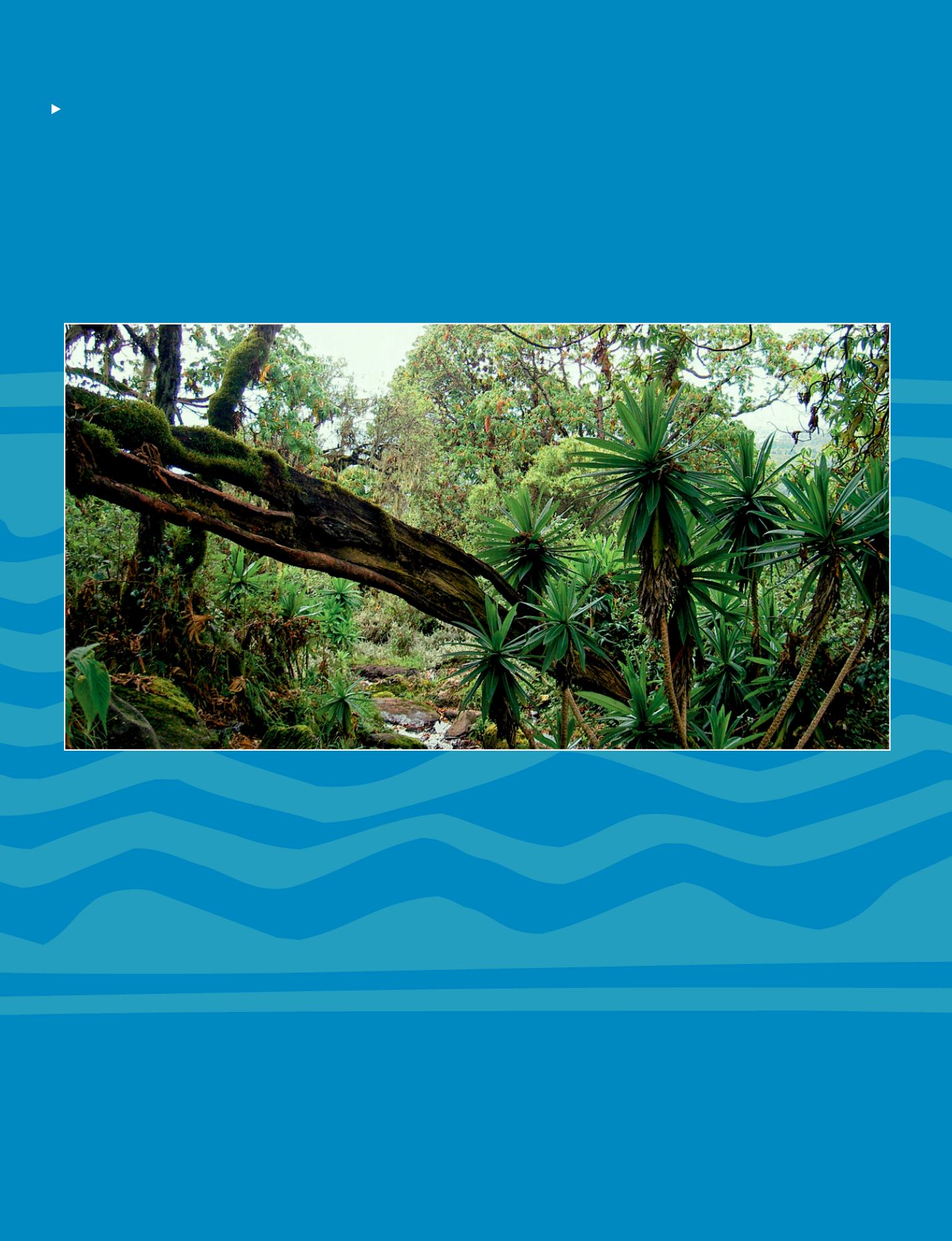
source of water vapour sucked into
monsoons and create environments
that are dry and cold or hot and rainy,
depending on the position.
The
climate
of
Africa
reflects
geographical factors and is difficult to
define, the best way of characterising
it being total precipitations and their
distribution in time. It has an impact on
practically all aspects of socioeconomic
life, whether these be agricultural yields,
the availability of natural resources, or
human and animal health.
Africa is an eco-geographical region with
immense riches. However, paradoxically,
apart from a few emerging countries, it
consists mainly of developing countries.
African economies make the region
a socially vulnerable one in which
populations with low incomes form the
majority.
In addition to gathering, hunting, fishing
and animal husbandry, including the
prestigious Peul, Boro-Boro and Masai
traditions, agriculture covers the basic
food needs of the population. But it is
vulnerable in the face of natural calamities
such as drought, floods and locusts.
When certain human practices such as
uncontrolled forest fires are added to
these, food crops display the extent of
their vulnerability. Agro-sylvo-pastoral
production is then seriously affected,
socioeconomic
and
environmental
disturbances are observed, causing
recurrent food shortages, poverty, rural
exodus, the overpopulation of capital
cities, chronic unemployment among
young people, emigration, inflation and
social revolt.
Is hope to be sought in integration, as
is recommended by certain people?
This is a fundamental feature of the
African situation insofar as effective
independence remains to be confirmed
and consolidated as a clear break
with neo-colonial practices. Innovative
development policies should be put into
practice at last, with integration by large
sub-regional ensembles in all fields
and with the ‘inclusive participation’
of populations (the term used on the
United Nations website) and economic
and social democracy (M.F. Niang).
Indeed, a long-term solution must be
sought in the creation or strengthening
of supranational mechanisms centred
on regional cooperation and multilateral
action and with reference to the progress
made in a totally different category by the
creation of the ECOWAS and WAEMU.
‘The image of Africa is strongly
conditioned by the ethnocentric viewpoint
of westerners, since Herodotus’ (A.
Berre). Four centuries of slavery and
deportation to the Americas and a recent
colonial past have strengthened this
simplistic perception that was already
taking form in antiquity and has long since
crystallised, giving birth to a superiority
complex among westerners with regard
to the African continent.
Africa is marked by this past and has
seen its culture—the shop window of
all civilisations—first negated and then
accepted as primitive culture with no
logical thinking and governed by emotion
alone: did not Gobineau see African art
as just an interior manifestation of the
nature of Blacks? However, through
the expression of its rich and varied
landscapes, for thousands of years Africa
has inspired and generated a true cultural
mosaic.
Far from being monolithic, Africa is not
mono-ethnic or mono-cultural either.
However, there are as many differences,
if not more, between a Boro-Boro, a
Bamileke and a Senoufo, to mention only
these three groups, than between an
Albanian, a German and a Portuguese.
Africa, with its many marvellous
landscapes, many of which have World
Heritage classification, is a fertile
ground for cultural fulfilment through
its singular beauty and has inspired
different forms of artistic expression.
Behind African landscapes that are often
ascribed with humanity, beliefs have
i
Montane forest, Mount Kenya (5199 m). The second highest peak in Africa has been recognised by the UNESCO World Heritage Commission as ‘one of the
most impressive landscapes of Eastern Africa‘. It is regarded as a holy mountain by all the Kenyan communities (Kikuyu and Meru) living adjacent to it.
© Chris 73
14 - Sustainable Development in Africa & Satellites


